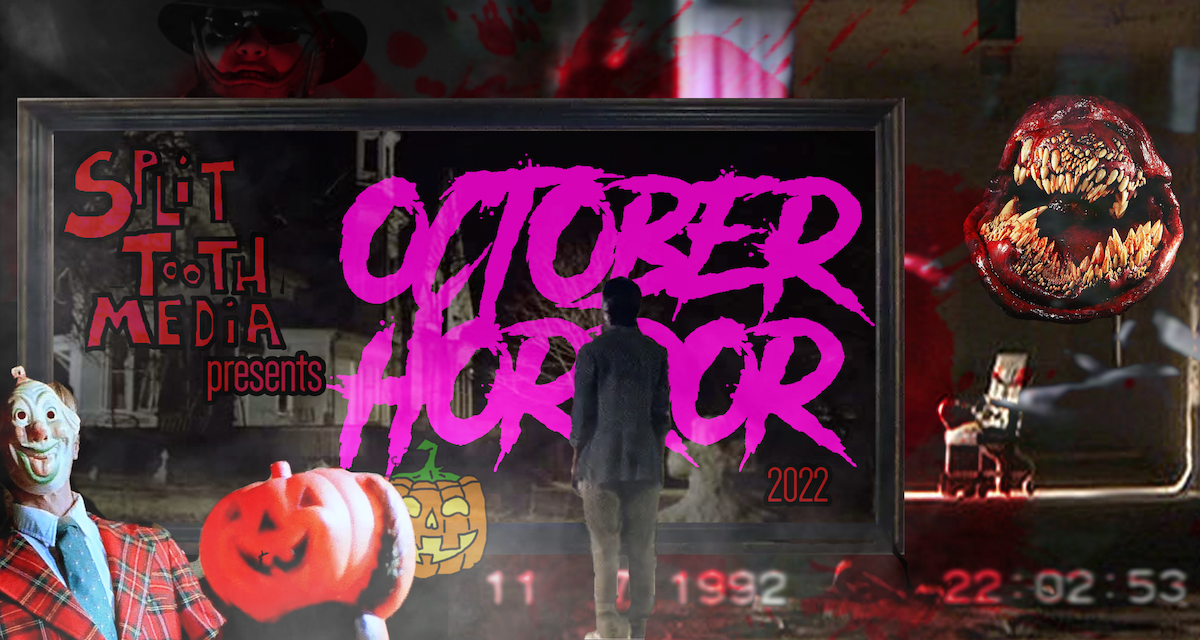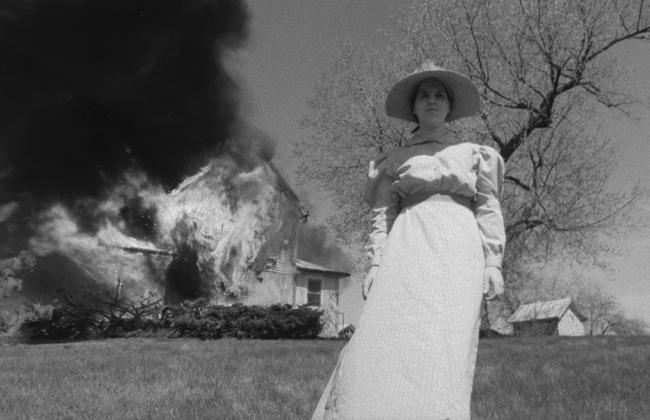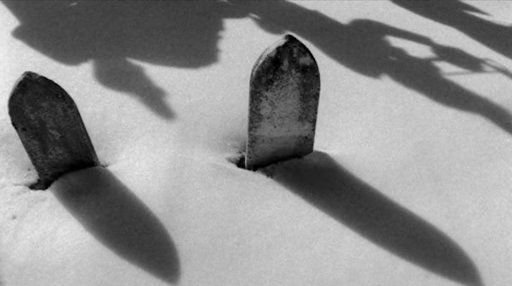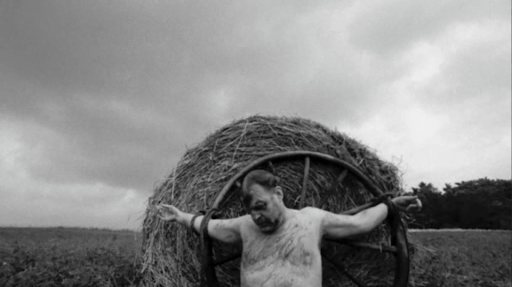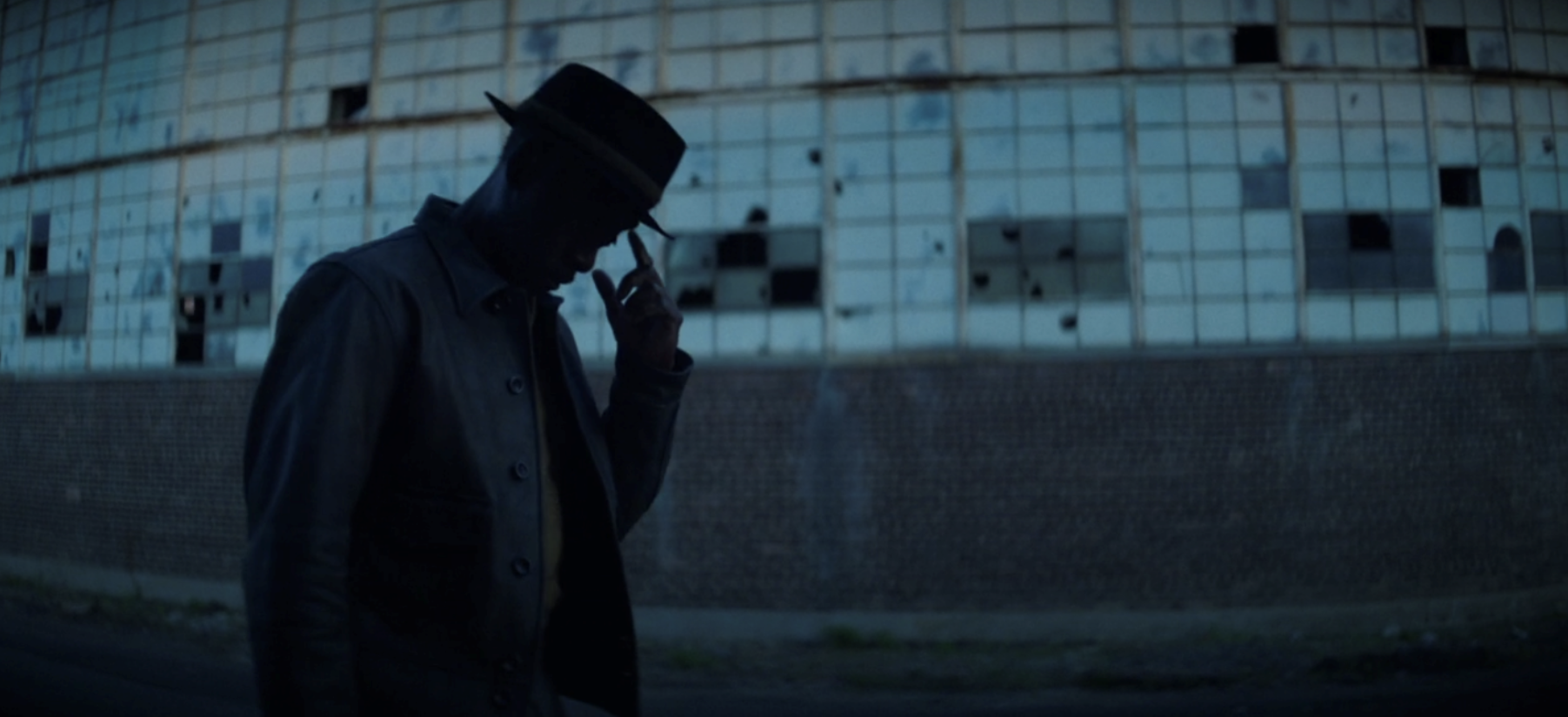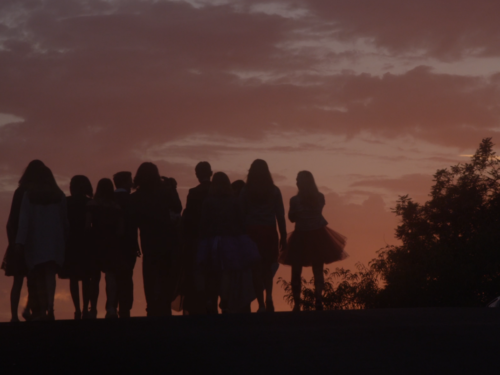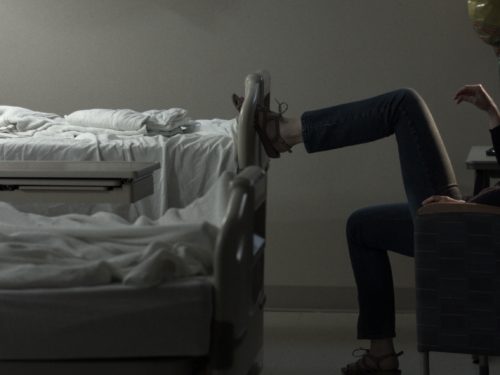Wisconsin Death Trip is an unclassifiable, tongue-in-gaunt-cheek American Gothic oddity that bends time toward cosmic delusion
Any piece worth its salt on Wisconsin Death Trip — either Michael Lesy’s 1973 non-fiction book or James Marsh’s eccentric 1999 film adaptation — is sure to include a depressing list of everyday horrors: dead and abandoned children, pestilence, suicide, murder, starvation, poverty, famine, despair, economic collapse, arson, addiction, witchcraft and satanic rituals, drunk bees, blind rage, rampant gun violence, self-immolation. The list goes on, all tied to events that occurred over a 10-year period, the last decade of the 19th century, in the greater Black River Falls, Wisconsin, area. A drunk man returns home after celebrating the birth of his child and proceeds to bash his newborn baby to death and strangle his wife. A woman leaves her family and runs amok throughout the state hurling rocks through thousands of windows. A disabled nine-year-old boy guns down his little sister. A faded, toothless opera singer blows into town to claim worthless land purchased with the last of her wealth. The body of a woman is exhumed and it is discovered that she was accidentally buried alive. Roosters are used to locate drowned corpses, a Norwegian custom. A diphtheria outbreak causes an uptick in dead infants. A farmer commits suicide by blowing off his head with dynamite. All this and more is preserved for posterity in the pages of the Badger State Banner, a local newspaper active from 1868 through 1926.
Neither the book nor the film claims that this period, from 1890 to 1900, is especially definitive, influential, or anomalous. There’s no assertion of a beginning and end to the wave of misfortune. But the events in question still ripple through time. The sins of colonialism poison the next century without any satisfying resolution to the trauma. Lesy’s original version of Wisconsin Death Trip is a core sample, compiling photographs by Charles Van Schaick, who lived and worked in the area at the end of the 19th century, and news reports without editorializing. Van Schaick’s many pictures of dead infants and children, dressed in their christening gowns and placed in tiny coffins, caught Lesy’s eye. He dug deeper and found a substantial record of inexplicable events documented plainly by the local newspaper. He emerged with an epistolary cross-section of regional history presented entirely through juxtaposition, its Vietnam-era resonance clear but unstated. It’s a quintessential depiction of late-19th century scenes and a challenging, morbid collage of American tragedy — a curiously dense concentration of hardship.
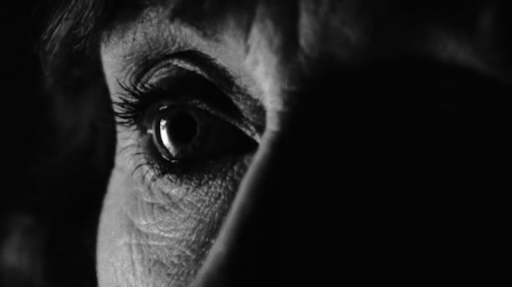
Marsh’s take on the source material is more playful, sardonic, and dynamic. He has called Lesy’s novel unfilmable and he approaches the task of translating it with abandon. He mines the material for evocative and wild images — staged over a period of four years and shot on location in Wisconsin — rather than concerning himself with strict journalistic integrity. His Wisconsin Death Trip is grave but also of a piece with his puckish early documentaries, including Arena pieces on classic albums by Bob Dylan and Lou Reed, as well as a feature on Elvis’ bizarre hamburger preferences. Wisconsin Death Trip also anticipates Marsh’s acclaimed documentary work hereafter, especially Man on Wire (2008), which became noteworthy for its inclusion of meticulously staged scenarios detailing the process leading up to Philippe Petit’s tightrope walk between the Twin Towers. Marsh’s key to unlocking Wisconsin Death Trip is to notch up the absurdity. He is more interested in knotting, muddling, and misleading. It’s a feat of adaptation that comments on itself, blurring the line between fact and fiction and spinning tenuous connections between archival images and period clippings. And, unlike Lesy, he draws parallels to the present by depicting scenes from the sleepy, sun-dappled late-’90s Black River Falls.
The film ostensibly takes place over a year, from winter to winter, marked by the metal typesetting plates of the local paper. So Marsh cherry picks sensational stories from a tumultuous decade and condenses it to a disorienting, expressionistic blur. Some threads follow a story arc; other images and fragments are impressions, abbreviated pieces of a story, or shards without comment or context. Ian Holm’s stately presence as the gossipy, wry narrator ties the loose strands together. His then-recent turn in Atom Egoyan’s The Sweet Hereafter (1998) is an important counterpoint, another work that zeroed in on a decimated, traumatized small town felled by tragedy and the spiral of malaise. The paper of record for Black River Falls was edited during this period by Frank Cooper, another Englishman chronicling the travails of the American heartland. His country of origin squares with both Marsh and Holm’s outsider point of view and dry, esoteric approach to the material. Marsh leans into the alien qualities of the era. He bends the hallmarks of the long-running, highly-acclaimed BBC Arena series’ house style — formal experimentation within a clearly structured, subdivided, artful package — and creates an unclassifiable, tongue-in-gaunt-cheek American Gothic oddity.
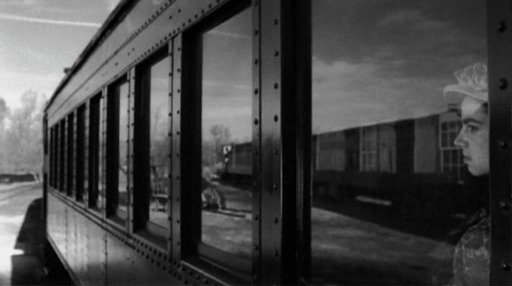
The beauty of the film is its balance of lurid imagery and numbing monotony. The volume and intensity of the events has a cumulative effect, and the matter-of-fact, adjective-free recitation of each tale makes the aberrant feel ordinary, even expected — a natural byproduct of civilization. This archive of everytown eccentricities and hostilities recalls Errol Morris’ Vernon, Florida (1981), and the movie sets itself up as a genteel PBS-style slice-of-life yarn, a parody even. It never loses that tone, even as it slowly unravels into chaos. But really Marsh is horning in on Guy Maddin’s territory. As in the Maddin universe — especially the autobiographical “Me Trilogy” entries My Winnipeg (2007) or Cowards Bend the Knee (2003) — the formalist fantasia of Wisconsin Death Trip pulls farcical and false images from the cultural slipstream, creating an alternate timeline that is visually inventive. Maddin’s uncanny lost silent films are faux weathered and imbued with a mischievous profane sensibility. Marsh plays in a similar stylistic sandbox and taps this vein of warped black humor. Like so many Maddin films, Wisconsin Death Trip has a nesting doll quality — chapters, title cards, repetitions, ellipses, stories within stories — that gives the experience a rhythm but also a feeling of descent. As we emerge from the pre-cinema era, we tumble down a temporal rabbit hole, then follow the breadcrumbs back to the surface.
Wisconsin Death Trip opens and closes with this laughable epitaph: “We can say honestly that we know of few states or cities which offer the advantages of those enjoyed by Wisconsin and Black River Falls… it is safe to assume that nowhere in the length and breadth of this great continent of ours can be found a more desirable residence.” The unreliability of the public record is loaded up front: the opening narration paints a picture of an idyllic region that is quaint, communal, and insular. Then the film offers up an onslaught of cruelty and disasters. In Wisconsin Death Trip, time bends toward cosmic delusion. The European settlers who flocked to the area and made it their home stuck it out even as the tales about the region were exposed as lies. Over images of poverty and disease, segregation and casino floors, we’re told that the displaced indigenous communities supposedly cause no trouble and stay out of sight. In the present-day segments radio broadcasts, ambient field recordings, talking head interviews, and various emcees fill out the soundtrack, breathing life into a community that is resilient but hardly thriving. The psychic trauma has been passed down to these folks, who imbibe the salutary comfort of the opening and closing lines, about the idyllic nature of the town. They talk about the wonders of Black River Falls in one breath and recount the violent crimes that still happen with regularity in the next.
Marsh’s vision is less a collage than a tapestry, stitching together a cavalcade of indelible images and indulgent stylistic flourishes, repetitions, and patterns. The film’s soundtrack adds to the anachronistic atmosphere. It makes time feel slippery. DJ Shadow’s funereal “Stem/Long Stem” from his landmark Endtroducing… (1998) recurs several times in the present-day sequences, wedged between cuts like Cleoma Breaux’s “La Vieux Soulard Et Sa Femme” and Blind Lemon Jefferson’s “See That My Grave Is Kept Clean,” as well as pieces by Brahms, Bach, Debussy and Rachmaninoff, plus modern classical from Mark O’Connor, Arvo Part, and an original composition by John Cale, of The Velvet Underground, who Marsh profiled for Arena. The distinction between the real and the faked, the lived and the imagined, is not a concern here. Authentic documents — photographs and transcribed writings read aloud verbatim — sit alongside recreations, interpretations, exaggerations. We see these events from impossible angles, in understated dramatizations, through a granular 16mm veil, rather than in carefully arranged tableaus or after-the-fact portraiture.
Images of breaking glass and children in coffins are key motifs of Wisconsin Death Trip. Time-lapse photography of rolling clouds over barren landscapes manipulates temporality on a micro level. The clacking of Cooper’s typewriter keeps the beat of the story as it jumps from byline to byline, then drifts to a series of spectral narrators. The window smasher Mary Sweeney (Jo Vukelich), with her uncontrollable mania for breaking glass, is the wily heart of Wisconsin Death Trip, and the film’s favorite character. She dots the year, crisscrossing the state in a delirious, illogical fugue of violent vandalism, abandoning her family without explanation and wreaking havoc for no apparent reason. The sound of shattering glass recurs frequently, marking time and her progress. She, like several other characters strewn throughout the film, finds herself eventually locked away at the Mendota Lunatic Asylum, her admission notes and diagnosis recited in a creepy whisper by the hospital clerk (John Schneider). She is the crux of a quartet of women who rebel and are inevitably institutionalized, including the faded opera singer Pauline L’Allemand (Marylin White), Mrs. John Larson (Kathryn Anderson), who allegedly drowned her three children in the river, and 15-year-old serial arsonist Anna Myinek.
Any given evening news cycle tests the limits of a person’s compassion. Stretched out over a longer duration, the steady stream of bad news and localized tragedy becomes numbing. Wisconsin Death Trip takes this inevitable empathy plateau as a starting point. Black River Falls is meant to be an anytown, a run-down monolith of salt-of-the-earth idealism and the American dream. In its third quarter, Wisconsin Death Trip suddenly accelerates. The stories start to pile on top of each other, with voice over tracks and subplots overlapping and fusing. The imagery becomes more nightmarish and jarring: a montage of shattered glass, infernos, a bloodied man strung from a hay bail, headless chickens, the kick of the chair as a man hangs himself from a tree branch, stigmata. Whispers of witchcraft poke through the fog. Rhyming shots of a crucifix statue and a hanged man profane biblical imagery. Between the 19th century events and the languid hum of the present day is an unseen, unacknowledged century with periodic conflict and terror. Homegrown serial killers Ed Gein and Jeffrey Dahmer act as stand-ins for an inexplicable madness that persists in the region. This “Summer” sequence pushes the film past garden variety small-town tragedy and into something more supernatural, a hex on this community that feeds hysteria and religious fervor a century on. Connections like this illuminate the strange alchemy of Wisconsin Death Trip. It finds bleak humor in these tall tales but it also locates real resonance between past and present, spinning a surrealist American origin story. Marsh’s position as an arm’s-length observer subverts homespun nostalgia and undercuts white-picket-fence romanticism. What could have been a tale of frontier resilience is instead an anthropological, art-damaged atrocity exhibition.
Stream Wisconsin Death Trip on Prime
Purchase Wisconsin Death Trip on Prime
Stay up to date with all things Split Tooth Media and follow Oliver on Twitter
(Split Tooth may earn a commission from purchases made through affiliate links on our site.
Find the complete October Horror 2021 series here:
